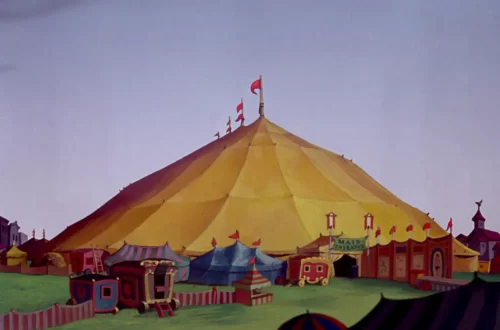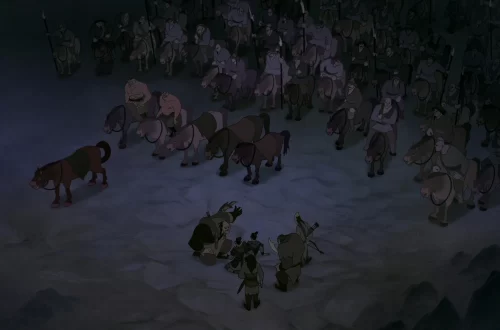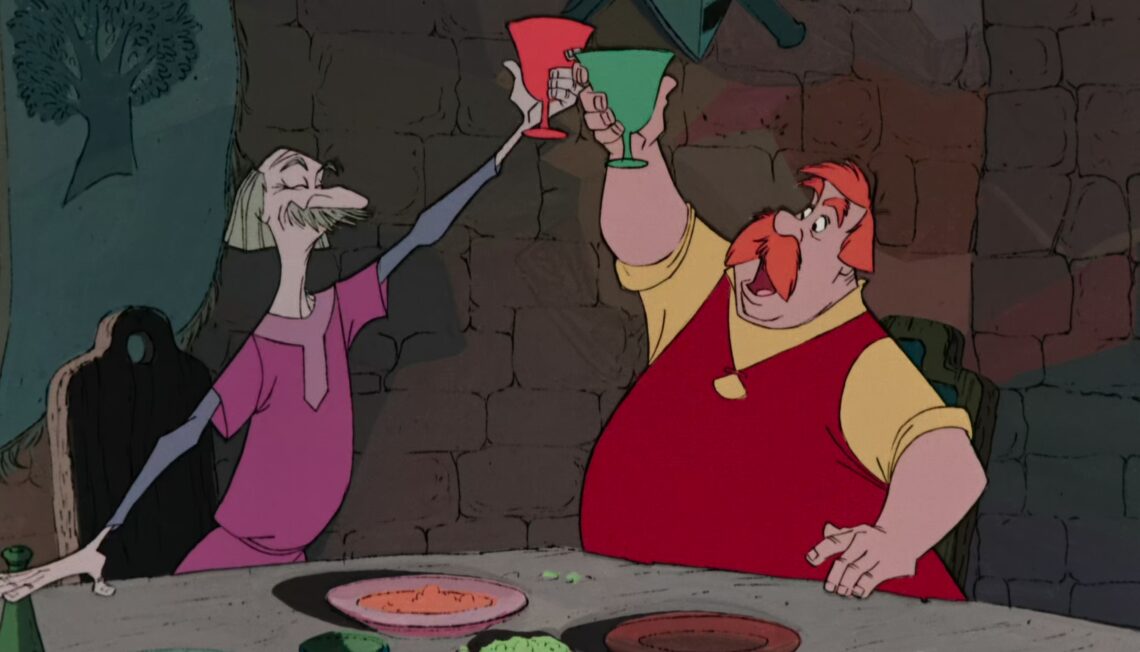
The Sword in the Stone and the Myth of the Round Table Knights
If there’s one thing that has fascinated and continues to captivate crowds of children (and adults) more than anything else, it’s undoubtedly all the legends related to King Arthur, his famous Round Table, and of course, the well-known and noble knights who sat at it.
In the classic Disney movie ‘The Sword in the Stone,’ the aforementioned table is only mentioned at the end of the film by Merlin. However, in reality, some of the knights who will later be part of it make appearances, and as many of you already know, they are Sir Ector, “that big lunk, Kay!” and the dear Sir Pellinore.
In the film, the three future knights of the Round Table are described in an extremely hilarious manner; in fact, so amusing that they become some of the most recognizable and beloved characters in the Disney universe. Particularly, Sir Pellinore, who appears in just over 30 minutes of the film, manages to become famous with very few lines, thanks to the skill of the Disney artists.
But, speaking from a mythological standpoint, who were the Knights of the Round Table? And what exactly was this Round Table?
With today’s article, I will attempt to answer precisely these questions, telling you a bit more about them and briefly listing the most renowned knights from Arthurian legends, starting right from the three introduced in the film.
So, saddle up your horses… we’re embarking on a journey to ancient England!
The Round Table
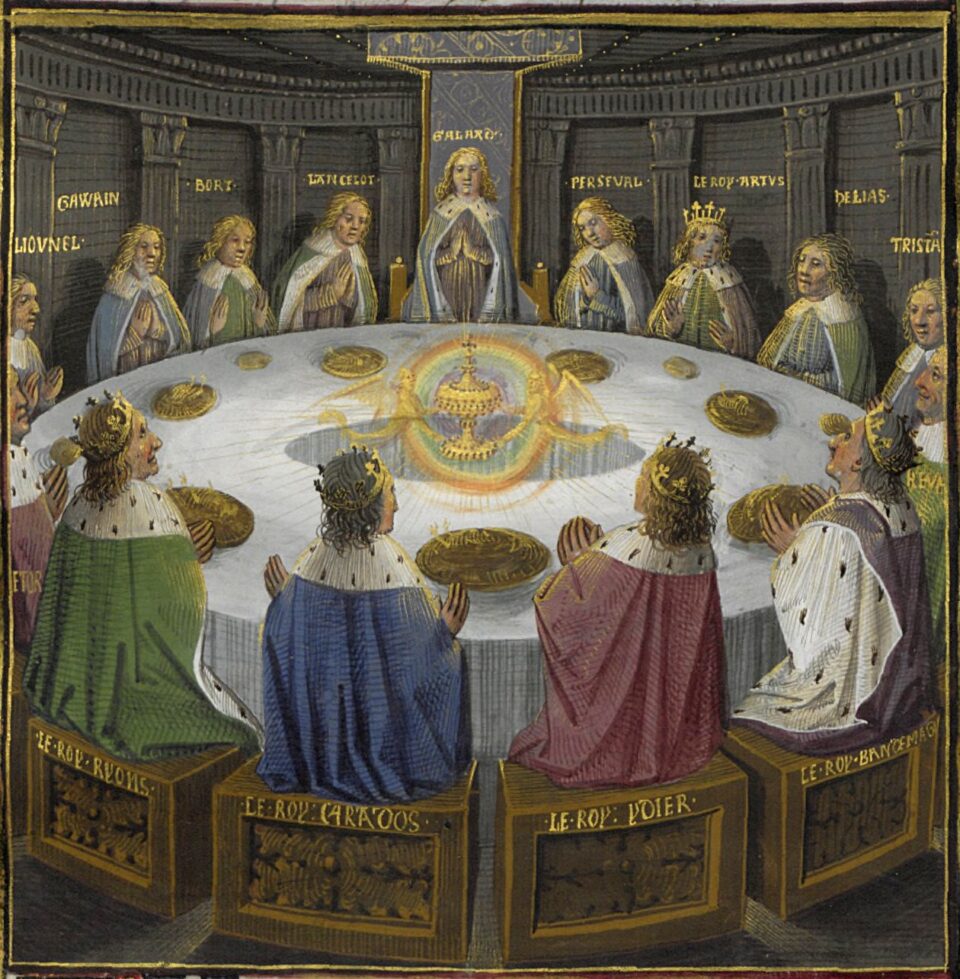
Before delving into who the knights were, it is necessary to explain what the Round Table exactly was.
The term “Round Table” was first mentioned in 1115 in the work “Roman de Brut” by the Norman cleric Robert Wace. There, it is explained that the Round Table was originally established by Arthur to prevent disputes among his barons and to promote a sense of equality.
Later, in the 13th century, the English poet Layamon expanded the story in his epic poem “Brut,” stating that the table was created by a carpenter from Cornwall due to a conflict that occurred during the Yuletide Festival (an ancient Germanic celebration). This fight had caused many deaths and injuries, and to reconcile, the carpenter constructed a massive round table with the capacity for over 1600 seats while being easily transportable.
According to other sources, it was a customary practice among Celtic warriors to sit in a circle around their king or the bravest warrior, and some elements of this custom can also be found in the narratives of Wace and Layamon.
In the works of the French poet Robert de Boron, the origins of the Round Table are linked to the quest for the Holy Grail and the Last Supper of Jesus—a story that became strongly intertwined with the Arthurian legends in the 13th century. According to this version, some of the knights, including Sir Percival, set out on a quest for the Grail. De Boron’s works tell that the Round Table was modeled after the table of Jesus’s Last Supper. In the legend of the Last Supper, an empty seat, known as the “Siege Perilous,” symbolized Judas’s betrayal. Similarly, Arthur’s Round Table was created, upon Merlin’s counsel, for Uther Pendragon, Arthur’s father. Just like Jesus’s table, it also had an empty seat, and only the purest knight who had completed the Grail quest could occupy it.
In essence, it becomes clear that the Table and its significance were closely tied to the courage, merit, and honor of those who sat there. Only the most deserving and noble-hearted knights were admitted.
That being said, who were these famed knights?
The Knights of the Round Table
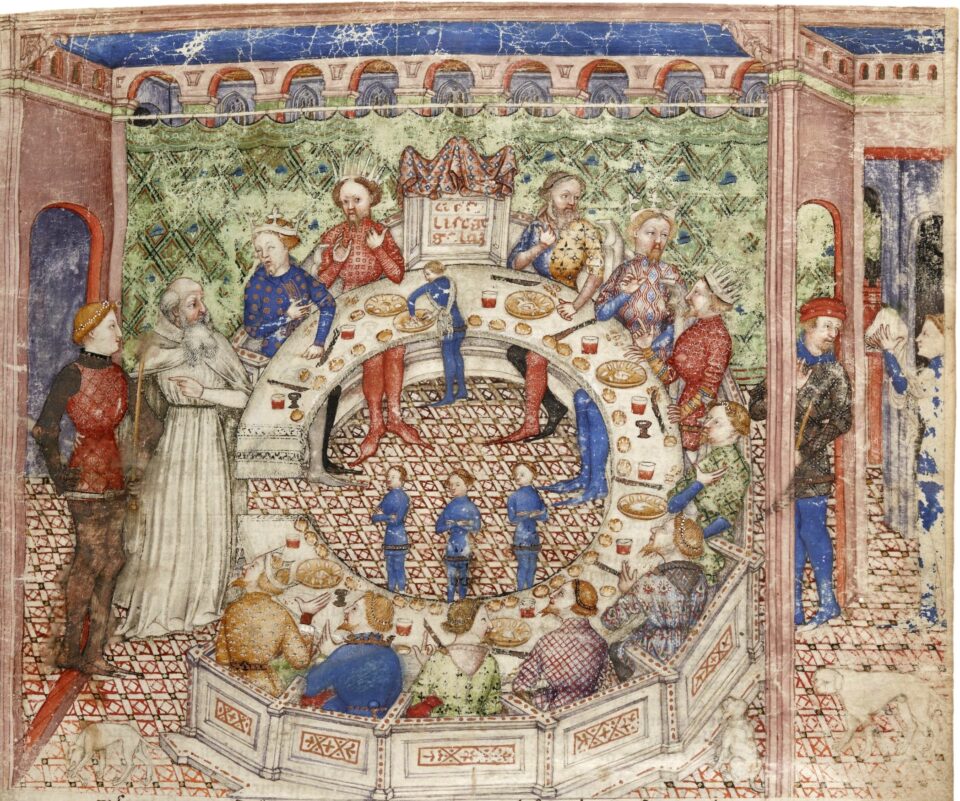
Before we explore the names of the principal and most legendary Knights of King Arthur, I’ll provide you with some more general insights into the concept of a Knight of the Round Table.
According to the legends, the knights were essentially the highest-ranking members of the King’s court and first appeared in various literary works tied to the Arthurian legend, as previously mentioned.
Their order had the purpose, first and foremost, of ensuring peace in the realm, and in some works, their quests for the Holy Grail are recounted. The Round Table itself, as mentioned earlier, symbolized complete equality among all those who sat at it, including the king. The number of knights varies depending on the source and the literary works in which they are mentioned. According to some, there were 12, while others suggest their number could even surpass hundreds or thousands.
However, the most famous knights are associated with English, Welsh, French, and Scottish myths and legends linked to King Arthur. Among these, those that are most commonly depicted in fantasy tales, movies, and TV series are the ones popularized by the 15th-century work “Le Morte d’Arthur” by Sir Thomas Malory.
Today, I’ll discuss precisely about them, starting with the three who appear in the Disney classic.
Sir Ector
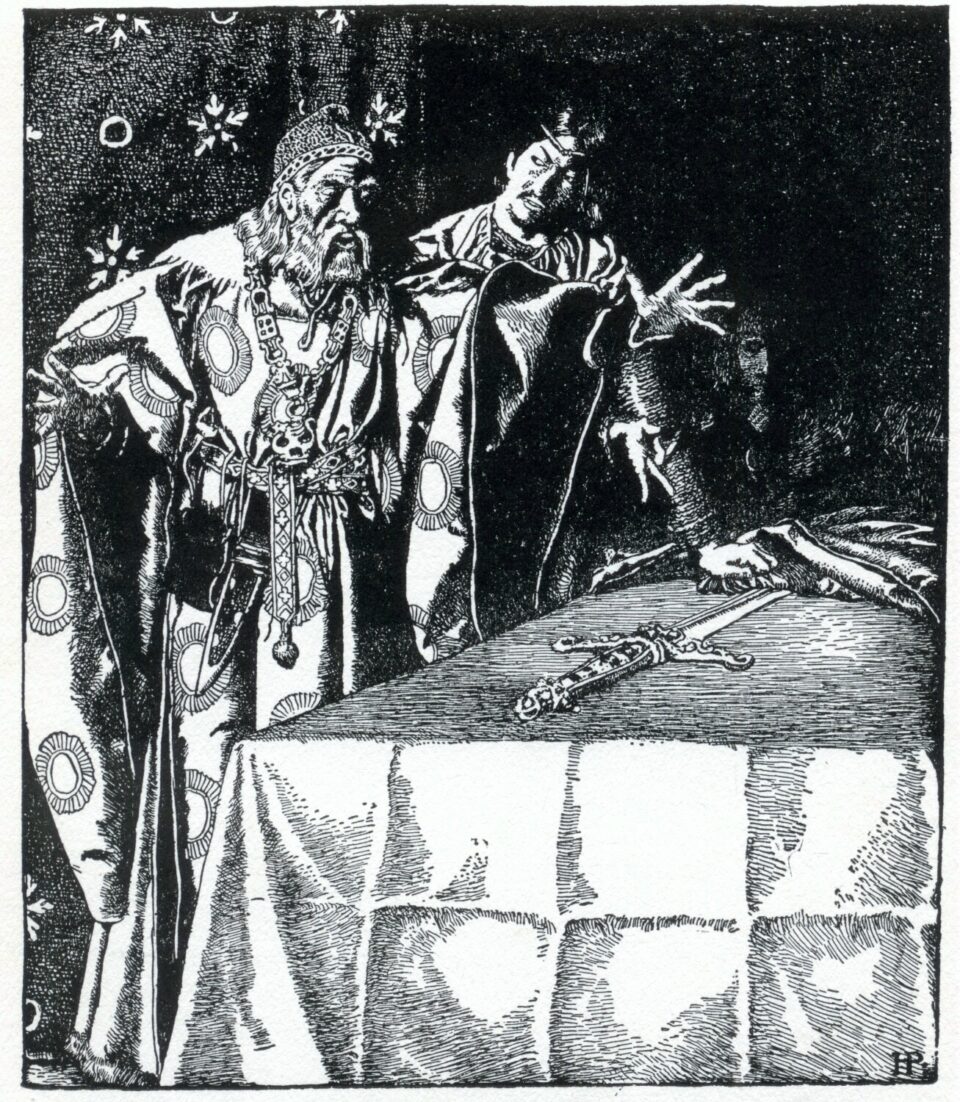
The portly Sir Ector, also known as Hector, Auctor, Antor, and even Cynyr in some Welsh legends, appears in both the aforementioned work by Malory and in the cycle of novels of ‘Lancelot – Grail’.
However, not much is known about him, except that he is probably the oldest Knight of the Round Table and therefore one of the first to be chosen as such. He owns a large estate and various properties in both London and throughout England (which is somewhat depicted in the Disney classic as well).
In various works, it is recounted that Sir Ector is, as in the film, the adoptive father of Arthur, entrusted to him by Merlin and raised as his son and foster brother of Kay, the son of Sir Ector. This continues until Arthur pulls the sword from the stone and thus takes his place as the King of Britain.
Sir Kay
That “big lunk, Kay,” according to legend, is anything but a lunk, as Merlin describes him. He is commonly called Kay, but he is also known as Kei, Keu, Key, or Cayous.
Firstly, he is described as a very tall and powerful man, as well as a fierce warrior, so much so that in some myths, he is depicted as the greatest warrior at Arthur’s court. According to other tales, he might have had mystical powers, such as the ability to breathe underwater for nine days and nights or to transform into a giant.
In general, however, he is described as an unpredictable and hot-tempered individual, a bit arrogant, cheeky, fiery, and occasionally cruel, even though he is still depicted as one of the most loyal knights of the king. According to some legends, he might have been Saxon and Christian. The French poet Chrétien de Troyes portrays him as a troublemaker who stirs up conflicts, capable of alienating even some of the noblest knights like Sir Lancelot or Sir Gawain. In short, a spirited character, not too different from how he’s depicted in the film.
Sir Pellinore
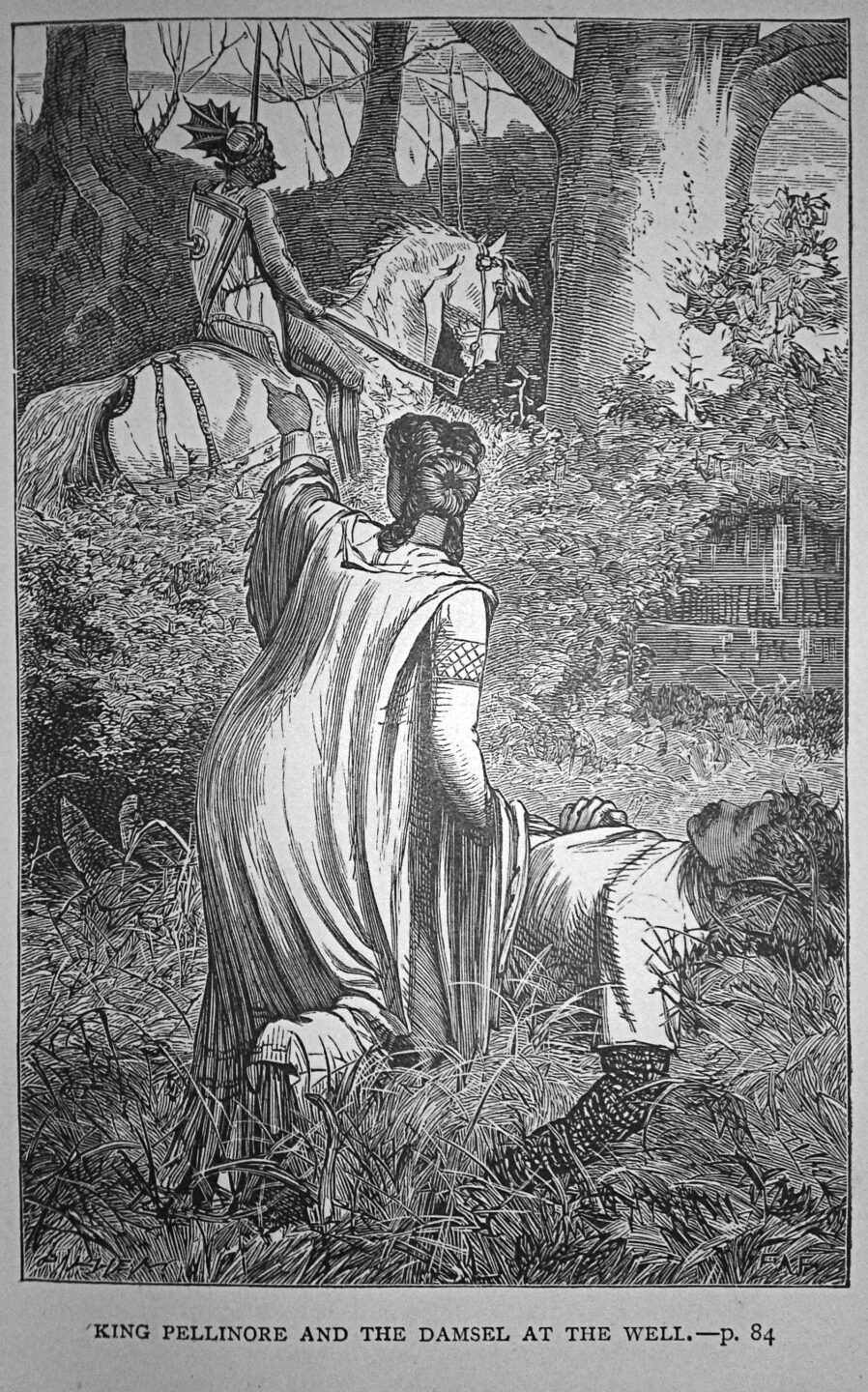
Sir Pellinore is not among the most well-known and legendary knights of King Arthur, but since he appears in the classic (and is also my absolute favorite), I couldn’t refrain from talking about him as well.
Pellinore, in addition to being a knight of Arthur, is also the King of the Isles, the brother of King Pelles, and the father of Sir Lamorak. In some sources and legends, he is also said to be the father of the more famous and renowned Sir Percival. The tales recount that Sir Pellinore encountered Arthur while he was in search of the beast Glatisant, a creature from Arthurian legends depicted with the head and neck of a serpent, the body of a leopard, the thighs of a lion, and the feet of a deer (quite a mishmash).
According to the stories, however, when the Round Table disbanded, Pellinore slew King Lot, and he was later killed by Lot’s sons, Gawain and Gaheris.
Sir Lancelot
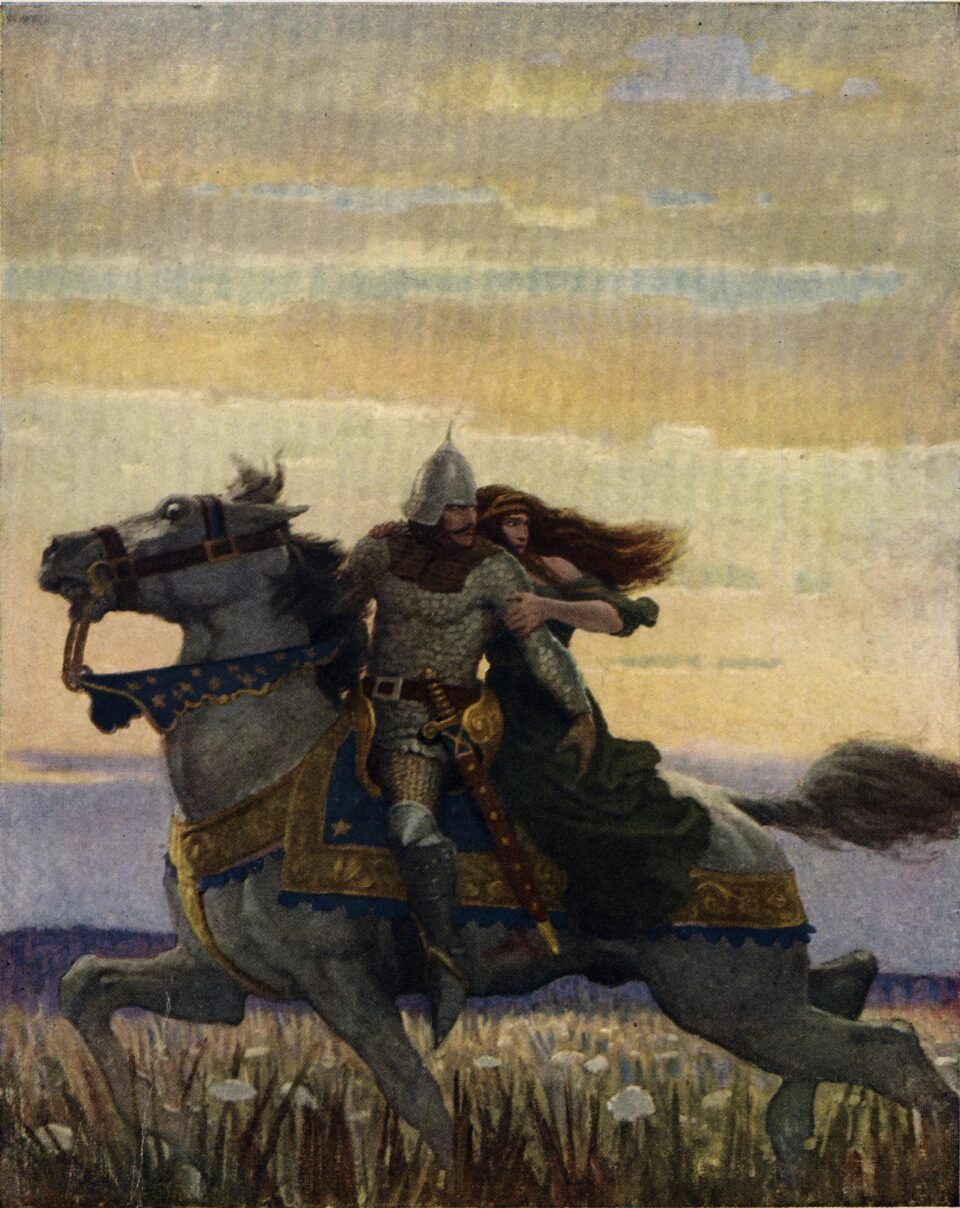
That being said, let’s move on to the other knights who don’t appear in the film but are nonetheless among the most famous and emblematic figures of the collective imagination linked to King Arthur. Among these, of course, the first to mention is Sir Lancelot.
Sir Lancelot, also known as Sir Lancelot du Lac, is the son of King Ban of Benwick and Queen Elaine. He is renowned as the First Knight of the Round Table due to his genteel, courteous, courageous manner, and his unwavering dedication to aiding others in need.
He is described as highly skilled on the battlefield, a valiant swordsman, and the greatest warrior of the Round Table. Additionally, he is said to be intelligent, charming, and possessed of a keen sense of humor; in essence, he embodies the classic and quintessential image of a legendary medieval knight… no wonder the queen became smitten.
According to legend, Lancelot was left as a baby on the shore of the Lady of the Lake’s lake, where he was later discovered by her and raised as her own. According to some sources, he was the father of Galahad and Elaine.
In some accounts, it is said that Lancelot was a favorite of Queen Guinevere for various reasons, including the fact that he saved her from being burned at the stake on more than one occasion. However, during one of these rescues, he accidentally killed Sir Gareth. As a result, the Round Table dissolved, the remorseful queen retired to a nunnery, and Lancelot lived as a hermit for the remainder of his days.
Sir Gawain
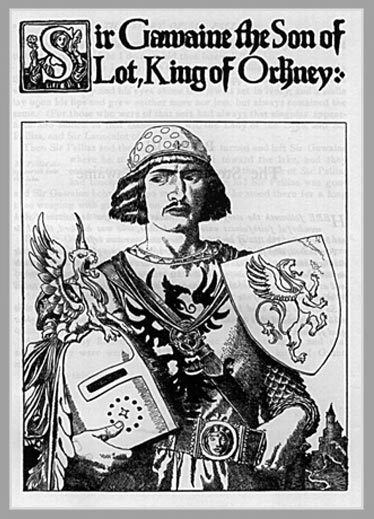
Sir Gawain is as famous as Lancelot and is the nephew of King Arthur. He is the son of the aforementioned King Lot and upon his father’s death, became the leader of the Orkney clan. According to some sources, he was considered the greatest knight of the Round Table, even greater than Lancelot, although he remained Lancelot’s closest friend. In some accounts, he is also designated as the heir to the throne of Camelot after King Arthur’s passing.
In many romances and chivalric works, however, he doesn’t play a prominent role but rather acts as a supporting character to other knights like Lancelot or Percival.
In English tradition, though, he is described as a hero and a shining example of courtesy and chivalry. According to the myth, following the death of Sir Gareth (his brother) at the hands of Lancelot, Gawain becomes Lancelot’s enemy and challenges him to a combat in which he is slain. However, before dying, he forgives Lancelot, who mourns by his grave for two consecutive nights.
Sir Galahad
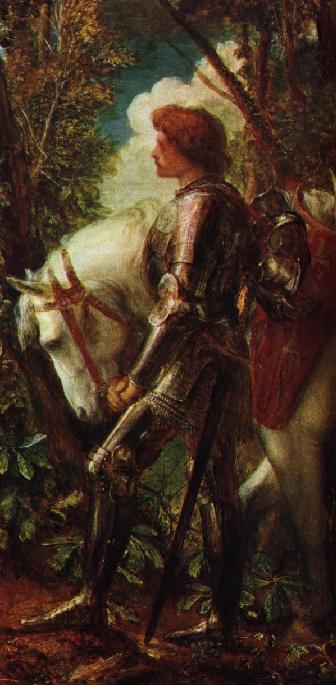
Sir Galahad emerged in Arthurian legends around the 13th century, specifically in the ‘Lancelot – Grail’ novels.
The son of Sir Lancelot and Elaine, born out of wedlock, he was raised in a convent from a young age.
According to certain versions of the legend, Galahad was brought to Arthur’s court by the king himself, and years later, while he was there, the Holy Grail appeared to him in a vision. The Grail showed him that he would be one of the three chosen knights to embark on the quest for the Grail. Joining him on this quest were Sir Percival, Sir Bors de Ganis, and Percival’s younger sister. The story is quite intricate and lengthy to explain, but suffice it to say that Sir Galahad is described as a “knight perfect in courage, kindness, courtesy, and chivalry.” In essence, like father, like son.
Sir Geraint
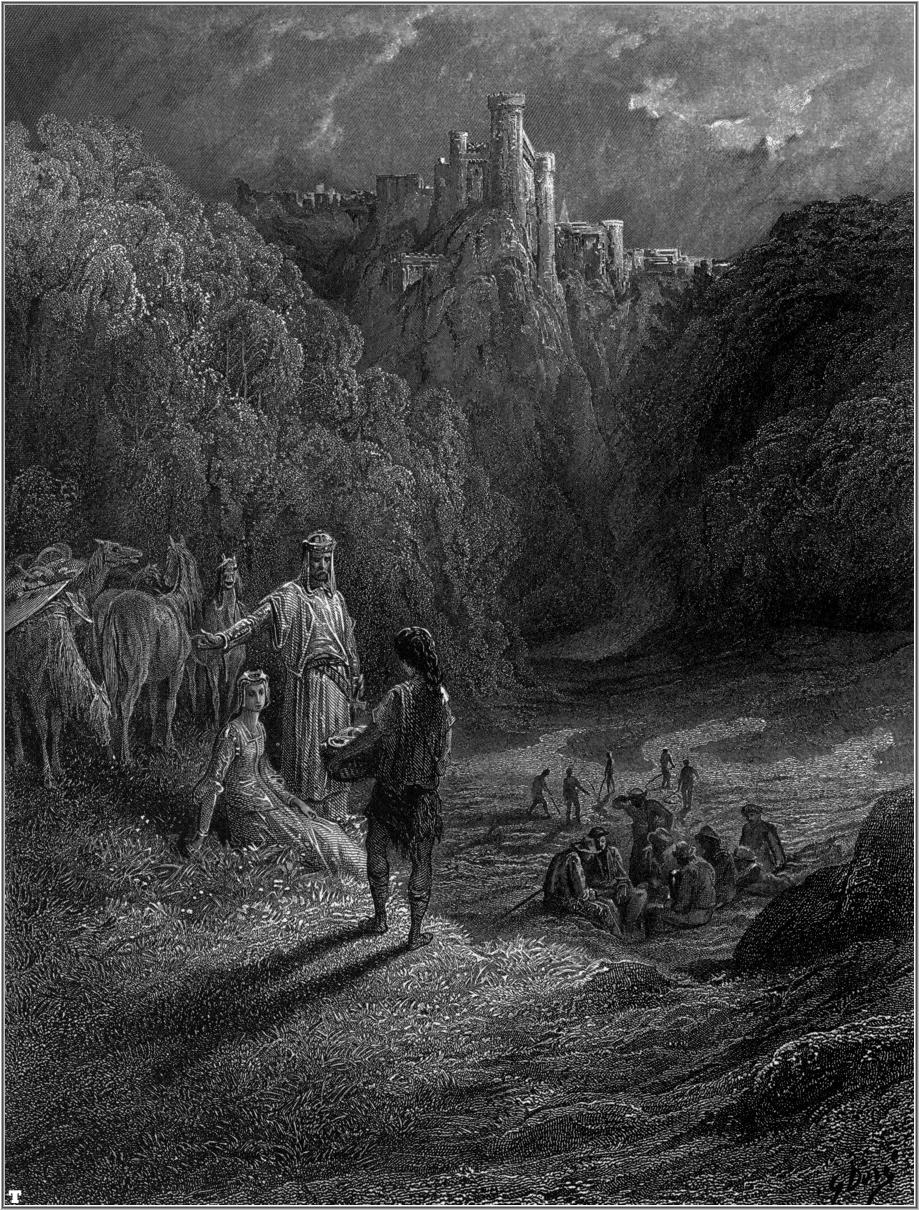
Among the works referencing Sir Geraint, we find ‘Elegy for Geraint,’ a poem located in the “Black Book of Carmarthen”, the oldest known manuscript in Welsh.
Geraint was the eldest son of King Erbin of Dumnonia and a knight from Devonshire. After his wife’s death, he spent part of his time at Arthur’s court seeking adventures.
According to legend, he was one of the greatest fleet owners in post-Roman Britain, and his castle was referred to as the ‘Fort of the Ship.’ According to the aforementioned poem, he died fighting against the Saxons alongside King Arthur during the Battle of Llongborth.
Sir Gareth
Sir Gareth first appears in Chrétien de Troyes’ work ‘Perceval, the Story of the Grail.’ He is the younger son of King Lot and the brother of Gawain. He plays a significant role in Malory’s ‘Le Morte d’Arthur,’ where he dies at the hands of Lancelot. In the same work, he is presented as a classic example of chivalry.
Apart from being profoundly loyal to the king and very courageous, he is also one of the most chivalrous and respectful knights. This, of course, makes his accidental death at the hands of Lancelot all the more tragic.
Sir Gaheris
Sir Gaheris is also first mentioned in de Troyes’ work, although many of his adventures are recounted in the ‘Lancelot – Grail’ cycle.
Sir Gaheris is the brother of Gawain, Gareth, and Agravain, and the son of the aforementioned Lot. Before being dubbed a knight, he served as a squire to his brother Gawain and was also his adviser, helping him calm down during moments of anger.
In some versions of the legend, he dies alongside Sir Gareth at the hands of Lancelot, which has led to the speculation that the two might be the same person. In other accounts, he is portrayed as not particularly bright, and even described as dim-witted and obtuse.
Sir Bedivere
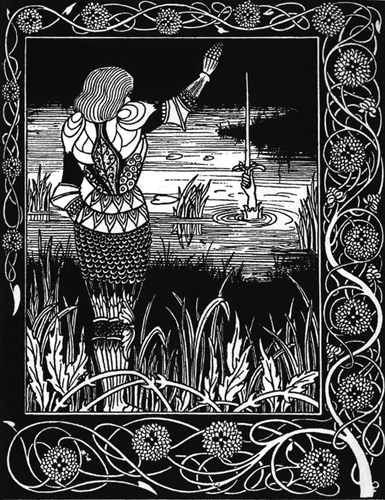
The legend of Sir Bedivere can be traced back to Welsh mythology, where he is described as an incredibly handsome and strong knight, as well as very loyal and courageous.
He is one of the first knights, along with Sir Ector, to join the Round Table and is the one who accompanies Arthur to the Isle of Avalon when he dies. He has only one hand, having lost one in battle, and helps Arthur fight the Giant of Mont St. Michel.
According to the legend, Bedivere and Arthur are the only survivors of the final battle between the king and the forces of evil led by Arthur’s nephew, Sir Mordred. It is at the end of that battle that Arthur orders Bedivere to return Excalibur to the Lady of the Lake by throwing it into the lake.
Sir Bors de Ganis
Sir Bors appears in various works, including the aforementioned one by Thomas Malory. He is one of the knights who set out on the quest for the Holy Grail and is the only one who survives and returns to Arthur’s court.
He is described as a chaste knight who has taken a vow of purity, promising never to marry. However, he eventually breaks his vow and marries the daughter of King Brandegoris, who falls in love with him. With the help of a magical ring, she makes him fall deeply in love with her.
He is also a cousin of Lancelot and supports him against Arthur when Lancelot is accused of infidelity along with Queen Guinevere. After his cousin’s death, he travels to the Holy Land and dies fighting in the Crusades.
Sir Lamorak
Sir Lamorak is first introduced in the work ‘Prose Tristan’ and also appears in Malory’s work, where he is referred to as the third-best knight of Arthur.
The son of Pellinore and the brother of Percival, he is described, similarly to Kay, as a strong, fierce, and brutal knight. Known for his feats, he excelled in jousts, often being able to fight against more than 30 knights by himself, killing or defeating them all. According to some versions of the legend, he was killed by Mordred during the final battle, and stabbed from behind. According to others, he was killed by Gawain as retaliation for the relationship Lamorak had with Gawain’s mother, Morgause.
Sir Tristan
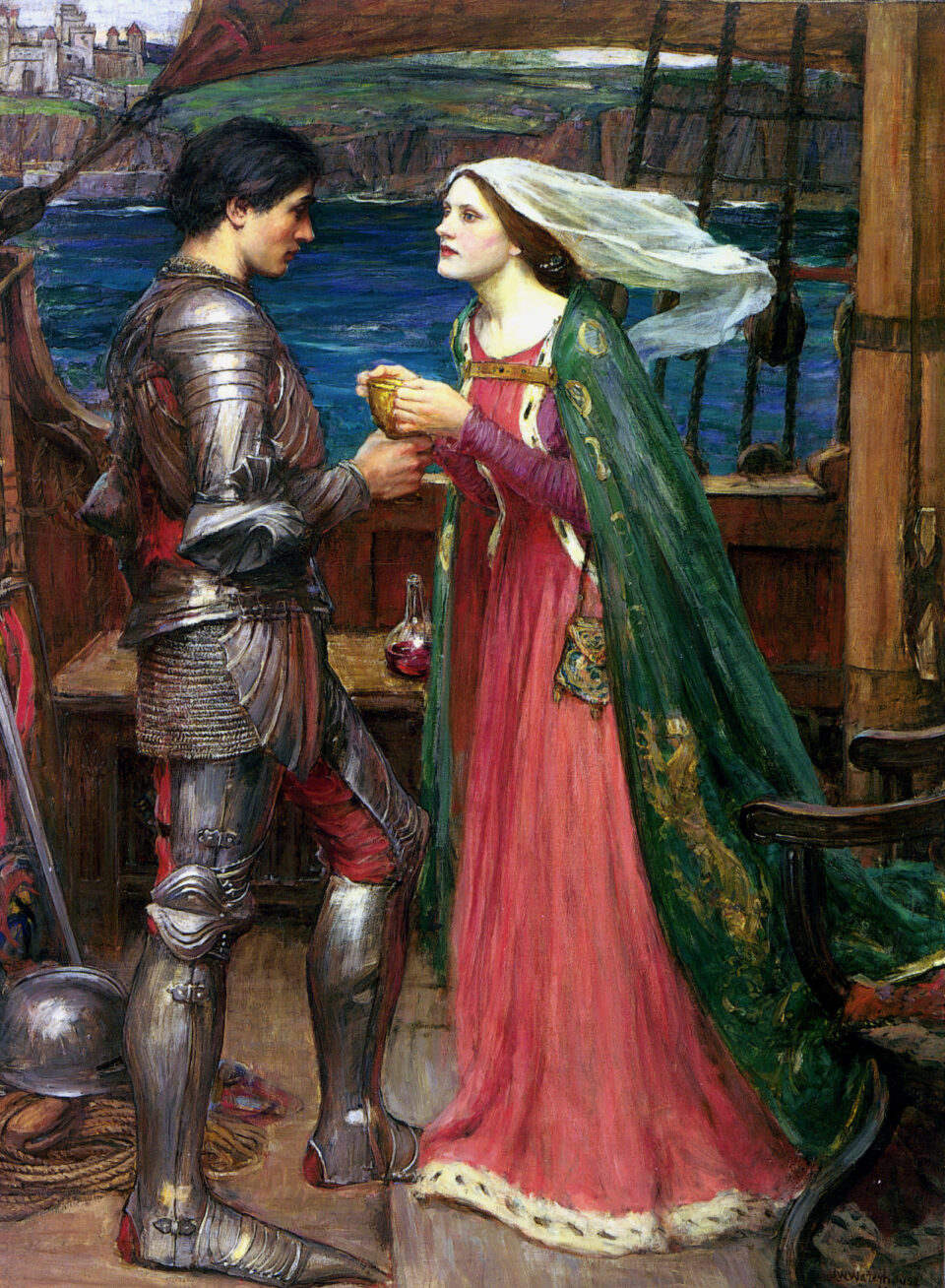
One of the earliest mentions of Sir Tristan is by the aforementioned French poet de Troyes, who recounts his version of the well-known and famous love story between Tristan and Iseult.
The name Tristan derives from an ancient word meaning ‘clanging iron swords,‘ although other modern languages associate his name with ‘sadness.’
The nephew and champion of King Mark of Cornwall and the son of King Meliodas of Lyoness, he went to live with his uncle Mark after his mother’s death and became his champion, defeating and killing Marhaus of Ireland in a duel. This defeat led to a truce with the King of Ireland, who sent his daughter Iseult to marry Mark.
Sir Tristan was sent to escort the future queen and bring her to his uncle, but during the journey, the two fell deeply in love and decided to flee together until Tristan was found and killed by his uncle.
Sir Percival
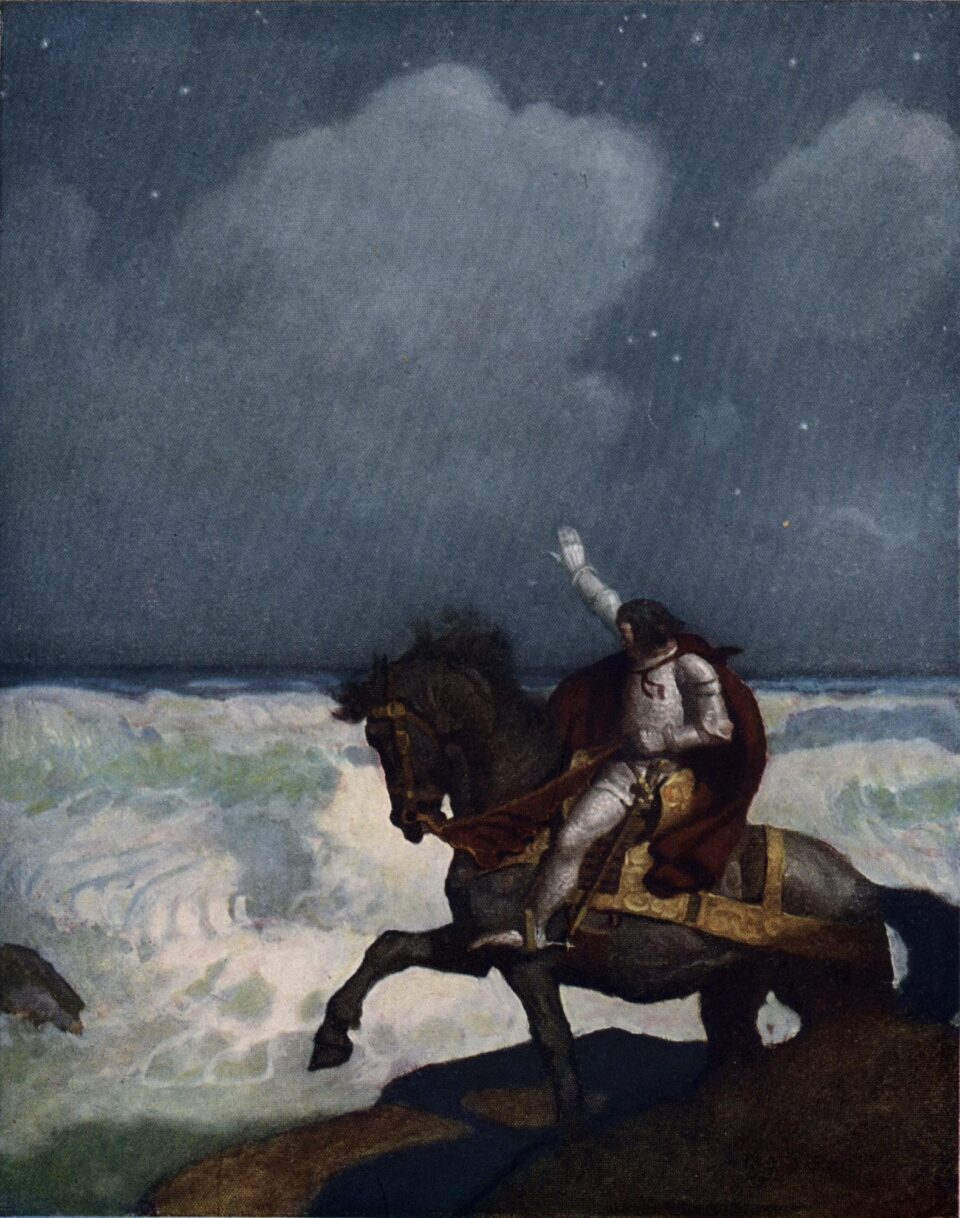
Percival appears in the works of de Troyes as well as in one of the greatest medieval epic poems, ‘Parzival’ by the German poet Wolfram von Eschenbach.
Raised by his mother without knowledge of weapons or chivalry, he eventually became one of the gentlest and most innocent knights of the Round Table. Although in some medieval versions of Arthurian legends, he is initially portrayed as somewhat simple and foolish, he is chosen to embark on the quest for the Holy Grail due to his pure heart and becomes its guardian.
Sir Agravain
Sir Agravain appears among others in the ‘Lancelot – Grail’ cycle and is often described in both positive and negative ways. Considered one of the most handsome knights of the Round Table, he is a skilled fighter and strategist.
At times, he is also described with positive adjectives such as noble and chivalrous. According to most stories, he is the son of Lot and the brother of Gawainn, Gaheris, and Gareth.
When depicted negatively, he is said to have a sharp tongue and less-than-gentle manners. In some versions, he even allies with Mordred, while in others, he is the killer of Lamorak. At other times, he is the one who exposes Lancelot and Guinevere’s affair, triggering events that lead to the downfall of the Round Table.
With that said, we have reached the end of our small exploration of the principal and most renowned knights of King Arthur’s Round Table. Of course, Arthur himself was a knight of the aforementioned table, but for obvious reasons, I will save a more detailed account of our dear Arthur for a future article.
What is clear is that among all, my favorite always remains the mustached and slender Sir Pellinore!!
Based on the descriptions, though, who is your favorite? Let us know by commenting on our social media channels if you enjoyed the article!
Sources:
- https://www.britannica.com/topic/Round-Table-Arthurian-legend
- https://kingarthursknights.com/
- https://www.treccani.it/enciclopedia/tavola-rotonda-leggende-della/
- https://www.treccani.it/enciclopedia/tavola-rotonda_%28Enciclopedia-Italiana%29/
- https://www.encyclopedia.com/arts/culture-magazines/knights-round-table
- https://www.worldhistory.org/image/6631/knights-of-the-round-table/
- https://www.worldhistory.org/Thomas_Malory/
- https://www.worldhistory.org/King_Arthur/
- https://www.historyextra.com/period/medieval/knights-round-table-arthurian-legend-holy-grail/
- https://www.worldhistory.org/trans/it/1-18148/merlino/
- The New Arthurian Encyclopedia, by Lacy, Norri J. 1991



